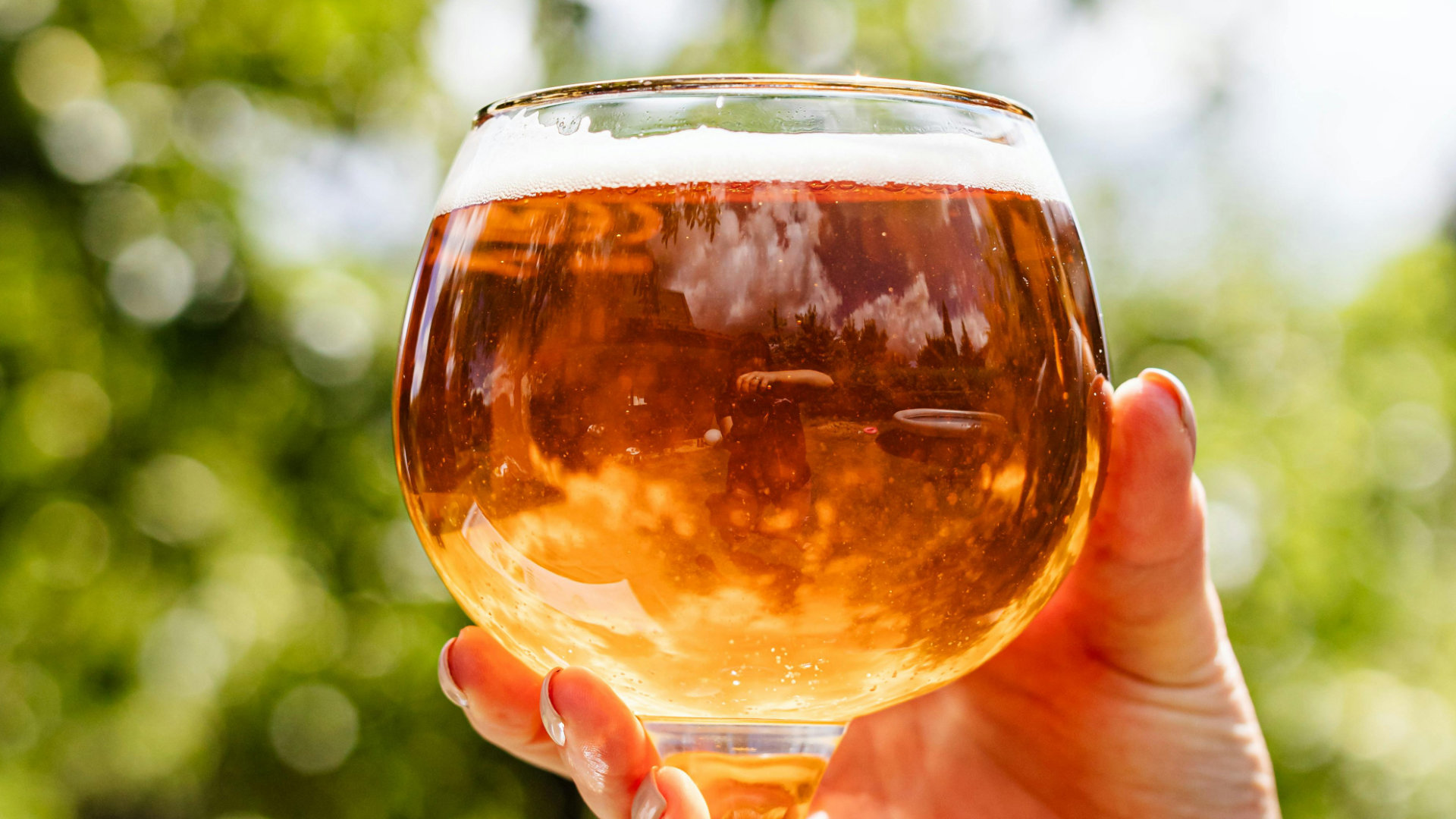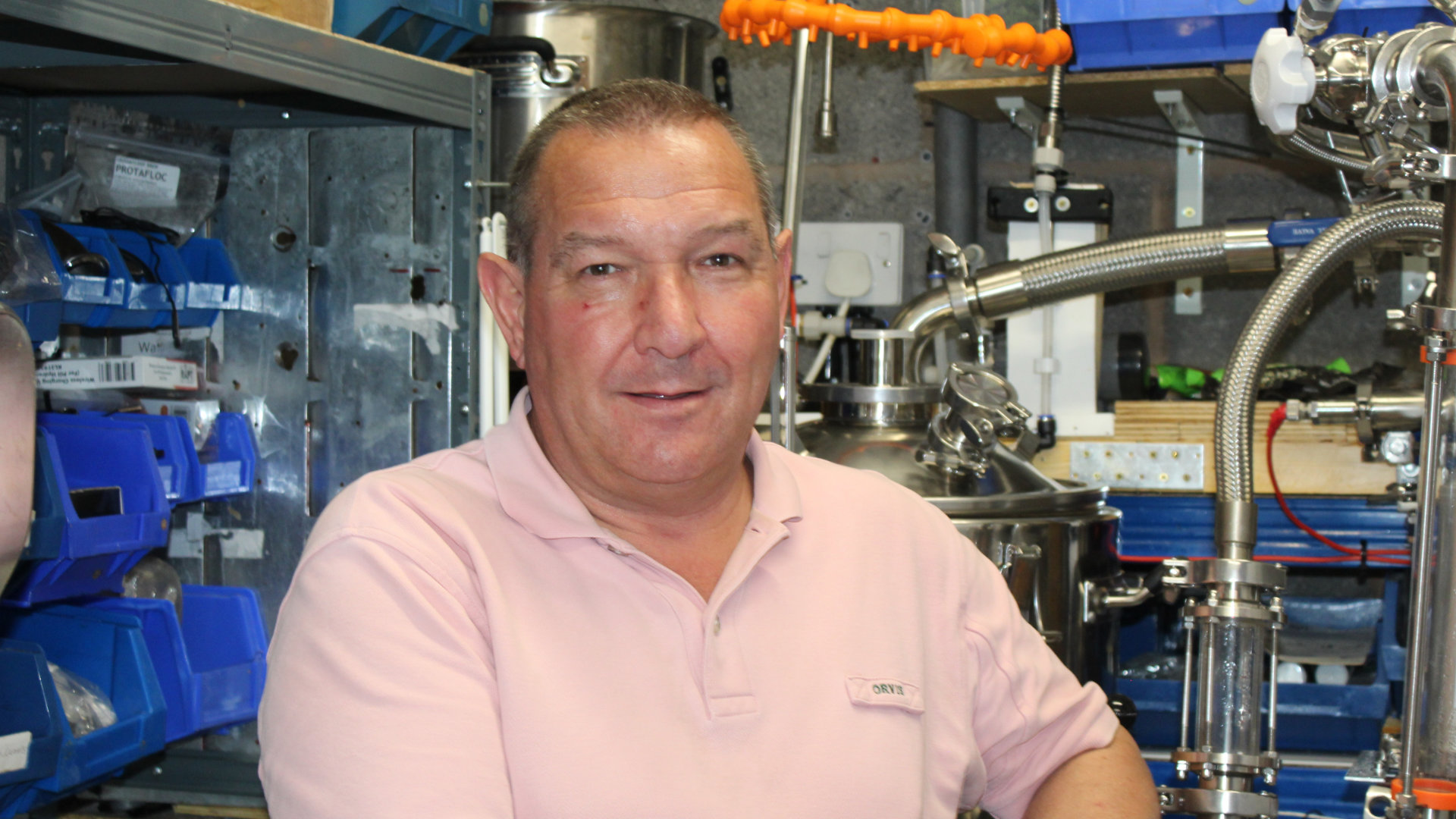Cody Palin, head brewer at Ludlow Brewing Company, dreams of a brewery on Mars. But there’s a lot that can be done to help things on Earth first. Ludlow Brewing Co., powered partly by solar and fuelled by sustainability and creativity, manage to look to the future while crafting award-winning traditional ales in the present. Yohanna Best discovers more.
If you’re a beer geek like us, you get very happy when you’re introduced to a really good brewery. The Ludlow Brewing Company is definitely a brewery you want to geek out about. They’re masters of the cask with serious commitment to modern brews and high-tech and sustainable equipment. For one, they produce really fantastic traditional ales. Then you’ve got their craft brews. Not to mention that the brewery and taproom are housed in a Victorian railway shed, just 50m from Ludlow train station, which, I would say, is a comfortable wobbling distance, if you fancy a brewery tour or to experience their tap room for great beers, live events, food, and a vibrant sense of community.
They’ve been going since 2006 and produce their traditional ales on a 20-barrel brewing system (that’s around 5,600 pints per brew, by the way). Their Derailed range of craft beers are brewed on a 2.5 barrel kit, with a simple set-up of a mash tun, Copper and open-top fermenter. Producing in smaller quantities (approx. 700 pints a brew) gives Head Brewer Cody Palin and the team the freedom to get creative with the modern Derailed craft beers. Cody is clearly a talent to watch, having won ‘Highly Commended’ in the Young Brewer Of The Year category at the 2022 Brewers Choice Awards. He kindly set aside time from brewing to tell us more about the brewery, their beers and what we homebrewers can do to be more eco-conscious.
YB: What’s your process for developing a new beer?
CP: It all starts on the theoretical side, as with all good science! First, we’ll identify the ‘genre’ we’re aiming for, and then list out all of the characteristics we want it to have, like ABV, bitterness, colour, haze (if any!) and overall taste profile. We can then distil that down into actual numbers on the recipe sheet to achieve the desired result. As I’m sure many of you know, brewing sometimes doesn’t go exactly how you expect it to, but as long as you’re familiar with your equipment you can build up a great data set to relate back to. There’s a lot of trial and error involved and there’s always more to learn, so we have a lot of fun brewing new recipes and trying to push the limits of what we can achieve.
YB: Top tips for brewing a traditional beer?
CP: With traditional beers I think there’s a little less margin for error than with some of the more experimental stuff. The drinkers know what they’re expecting, and if it doesn’t match up it can throw people off. There’s also usually not as much going on in the overall profile of the beer, so off-flavours and quirks can’t be masked quite as well when compared to a heavily hopped hazy. That being said, it comes down to precision at every step. A good, clean traditional pint needs to be consistent. This means always hitting your pHs, monitoring and treating your water (a lot of people overlook this), having good control of your fermentation temperatures, not sparging for too long... The list goes on. Little mistakes can add up quickly and turn into something noticeable, so we’re really hot on hitting our numbers. It’s all chemistry and biology at the end of the day, and thus can be predictable. Keep your recipes as simple as possible. Less is certainly more from my experience.
YB: Any interesting hops on your radar for your craft brews?
CP: I’ve been having a blast with Harlequin recently. I first came into contact with it when judging a British hop competition and it blew everything out of the water. For a UK-grown hop it’s extremely punchy and is somewhat comparable to a US Cascade. It also comes at reduced cost being a domestic hop, which always helps. Don’t think you need to go too far afield for those massive flavours and aromas! Across the borders I’ve had samples of Nectaron (New Zealand) thrown my way and I’m super keen to try a brew with these. I’ve been having some great success with the dream team, Simcoe and Mosaic in our more hop-forward products but I’m sure most of you have heard of them! I would keep an eye on UK grown hops over the next few years. I think there could be a real push for ‘All British’ beers and some of the hops coming out of our fields today are unbelievable.
YB: We love how eco-friendly your set-up is! How can we as homebrewers be more environmentally sustainable?
CP: I think everyone should look at this from the point of view of “what are we using the most of?â€, and the answer is usually water and power. Now obviously the water that ends up in the beer cannot be re-used (barring any questionable home-made-toilet-waste-treatment plants), but water used for both cooling and cleaning certainly can. Water used for cooling wort after the boil (through a heat exchanger or closed-loop system) will be hot, and hot water is always useful, both for cleaning or even the following day’s brew. Doing the final rinse down on a vessel? Save that water to do the initial rinse on the next tank! I think these are probably the easiest and most impactful things any brewer big or small can implement to massively cut down on both water and energy costs. Oh, and insulate. Insulate everything!
Looking at raw materials, always try to source as locally as possible. Barley, wheat, oats and hops are grown all over the country, and there may be a farm just down the road from you. It adds something a little special making great beer with local ingredients, and there’s nothing better than sharing a pint with the person who has grown your hops! Waste-wise, spent grain and hops make for great compost and fertilisers, and excess yeast can either be saved for the next brew, used to make bread or turned into flakes. Yeast is highly nutritious and contains every amino acid the body needs, so don’t throw it away!
YB: What’s the weirdest/most interesting thing that has happened while brewing one of your beers?
CP: Haha, well, during our first foray into making hazy IPAs (after having only brewed bright traditional beers since the brewery’s inception), we thought “how hard could this possibly be? We just need to add a boatload more oats and hops and not fine it, right?†and what we ended up with, I can only describe as closely resembling home-made pea soup. You can definitely, definitely have too much haze. Lesson learnt. I’ve garnered a strong respect for the hazies over the years, and I’m pleased to say our beers in this genre have come a long way since then! I actually believe it’s harder to make a clean, stable hazy IPA than it is a traditional clear beer, as there’s so many more variables in play.
YB: Who would be your dream drinking buddy? Which of your beers would you serve and what would you talk about?
CP: Honestly, and this may not be the most popular answer given recent events, but it would have to be Elon Musk. I’d love to dive into his mind to discover what he would do within the beer world given the opportunity, as it’s so far from what he does, and the grand scale and speed at which he seems to make things work. I’m fascinated by AI and automation and think it’s going to play a huge, even society-shifting role over the next decade, even in the brewing world.
In terms of beer choice, I think I’d like to rein it in a little and offer him something more traditional like our ‘Ludlow Gold’, just to express the ancient nature of the craft and the respect one must have for it. All in all, I think we could have robots clearing out the mash tun before nightfall, maybe even a brewery on Mars.
YB: What do you think the future holds for traditional beer?
CP: I think there will always be a market for traditional beers across the globe. Cask beer is an art, and though it may be losing popularity currently, it’s always been the root that connects the beer world, particularly in the UK. I can see why both pubs and brewers are favouring keg ales, as there’s a lot less hassle in the handling and storage of them. Keg beer isn’t going to cry that you’ve left it open for a day too long and it’s becoming more accessible for brewers to produce due to technological improvements in equipment and machinery. I think a reasonable outcome for the future is that (if we’re defining traditional beer as cask beer) cask beer will become more of an artisan product, and in conjunction with the trend in low / no-alcohol beers, a higher proportion of beer consumed across the UK will be packaged in keg rather than cask. I think it’s more important than ever for brewers to remain adaptable to the shifting market, particularly if they rely on traditional cask beers to pay their bills.
YB: What can we look forward to from Ludlow Brewing Co in 2025?
CP: We’re not far from wrapping up a pretty major expansion at the brewery, with lots of automated kit and cutting-edge tech wrapped up inside. We built this with the intention of bringing Ludlow’s first lager (Latitude 52) to market, which we’ve now got on the taps both in house and to a select few local pubs. We should be signing off all the equipment next year and getting it to a point where it (almost) runs itself. This project has been many years in the making and we don’t think this level of automation has been achieved by any brewery of our size before, so it’s a massive achievement. We’ve had to design the plant ourselves and figure out all of the algorithms and instrumentation to achieve this at a low cost, so we’re really looking forward to getting it going.
Ludlow Brewing Co’s award-winning beers include a popular range of traditional ales, some of which are made with locally grown hops - Ludlow being just ‘up the road’ from the hop yards of Worcestershire and Herefordshire. If you’re after a solid classic session ale, order a Ludlow Best (3.7%) with Goldings, Cascade and Bramling Cross. It’s also gluten free, so it’s extra appealing for some of us. The brewery describe their flagship golden ale, Ludlow Gold (4.2%) as a “good, honest pintâ€, but if you’re into your darker beer then the honey-sweet, toasted, smoky elements of Black Knight (4.5%) will be the one for you. This one’s a hybrid stout / ruby porter. From their modern craft range, try Jam Dunk (5%) - an award winning IPA, brewed in collaboration with Hereford’s The Jam Factory, zesty and tropical with Idaho 7 hops; it’s gluten-free and vegan too.
Listen, they have so many great beers, I would be ruining the surprise to list all of them here, so go check them out. Pay them a visit or order some beers online to enjoy at home.
Read more, book a brewery tour, visit the tap room or buy/find beers: ludlowbrewery.co.uk











